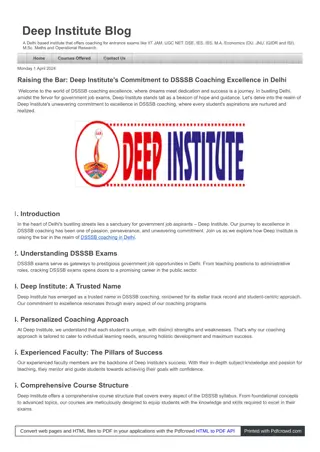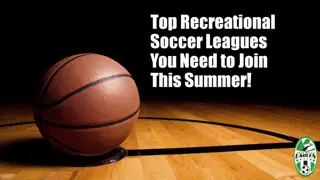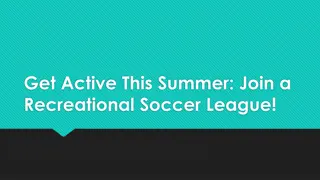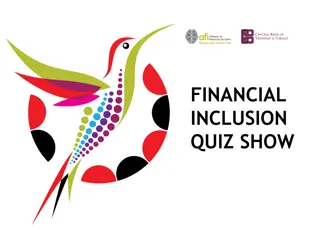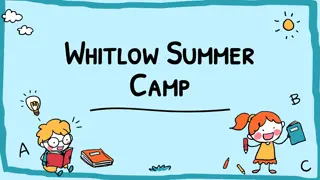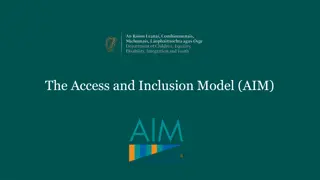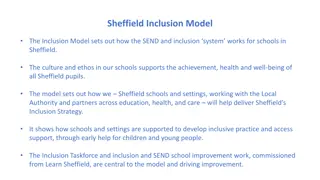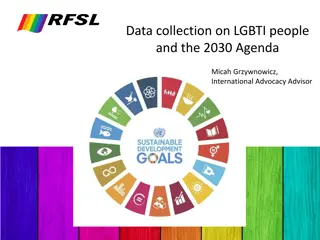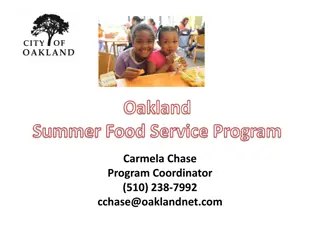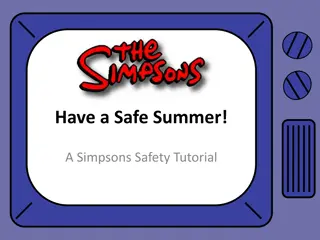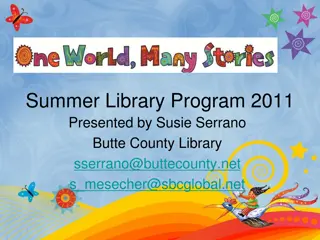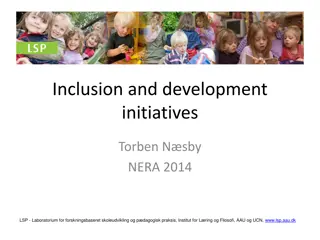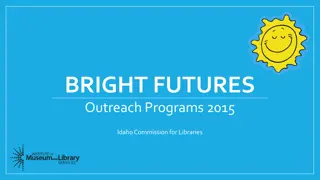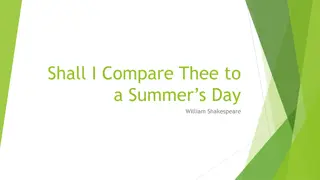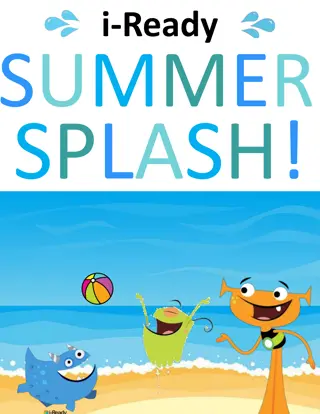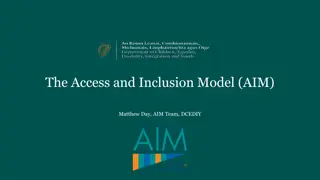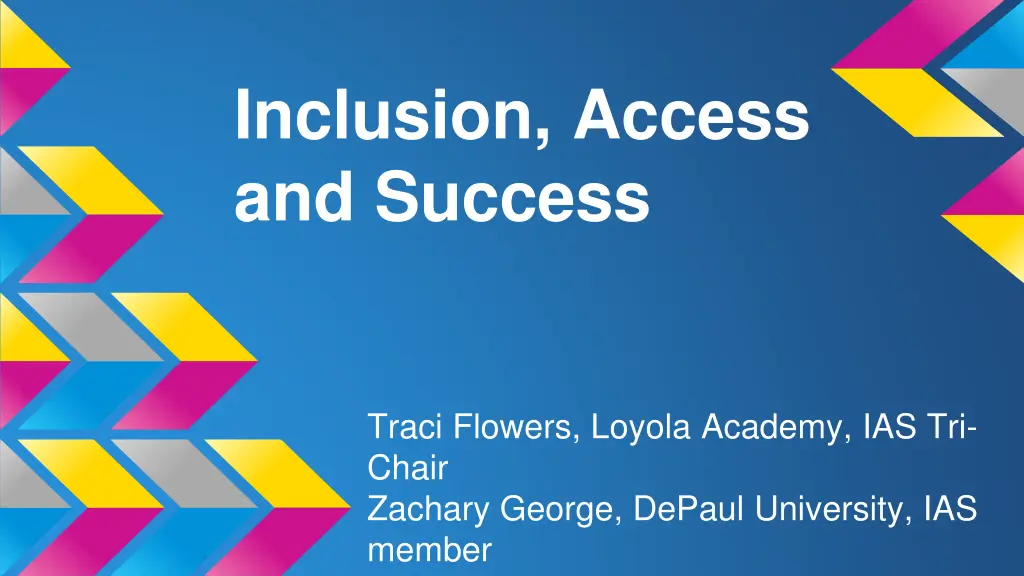
Empowering Underrepresented Students in Higher Education
Explore the initiatives of the Inclusion, Access, and Success Committee in advocating for underserved students in post-secondary education. Learn about the challenges faced by underrepresented populations and discover resources to support first-generation college students in their academic journey.
Download Presentation

Please find below an Image/Link to download the presentation.
The content on the website is provided AS IS for your information and personal use only. It may not be sold, licensed, or shared on other websites without obtaining consent from the author. If you encounter any issues during the download, it is possible that the publisher has removed the file from their server.
You are allowed to download the files provided on this website for personal or commercial use, subject to the condition that they are used lawfully. All files are the property of their respective owners.
The content on the website is provided AS IS for your information and personal use only. It may not be sold, licensed, or shared on other websites without obtaining consent from the author.
E N D
Presentation Transcript
Inclusion, Access and Success Traci Flowers, Loyola Academy, IAS Tri- Chair Zachary George, DePaul University, IAS member
What is IAS? The Inclusion, Access and Success Committee shall advance the association s commitment to inclusion for underserved students and the educational professionals who guide them. The IAS Committee strives to heighten awareness, consciousness and sensitivity to the issues of culture, race, citizenship status, sexual orientation, gender, age and other differences as they pertain to post-secondary access. The IAS committee develops educational programs for counseling professionals working with students who, for reasons of disadvantaged experiences, are often denied access to post-secondary educational opportunities. http://www.iacac.org/inclusion/
Who is IAS? Independent Counselors, School Counselors, College Counselors, Community Based Organizations (CBO) Professionals and Admission Professionals with a shared interest in inclusion, access and success for underrepresented college-going student populations.
Who is underrepresented Underrepresented in higher education refers to racial and ethnic populations that are disproportionately lower in number relative to their number in the general population. Continued research provides evidence of disproportionately lower rates of academic success for historically underrepresented students across the nation when compared with other groups of students. Specifically, Lower Access Getting into college. Lower Retention Staying in a course from the beginning of the semester until the end. Lower Success Passing a class. Lower Persistence Coming back and enrolling, semester after semester. Lower Completion Completion of educational goal, e.g., certificate, associate degree, etc. Lower Transfer Moving on to a four-year institution.
First Generation No Universal Definition: a student with neither parent having any education beyond high school," or "neither parent having received a four-year college degree. It s Tough to Trailblaze: It is estimated that 30 percent of students enrolled in postsecondary institutions today are first-generation college students. But 89% of these students will not earn a bachelor's degree six years out from high school. They drop out of college at four times the rate of their peers whose parents have a postsecondary education. The Students: Academic Issues, Time Management Issues, Financial Issues. The Families: Attitudes, Lack of Postsecondary experiences. Peers & the College Community: The Campus, Purpose of Higher Education, Lack of Preparation, Self- Perception Tenacity and Pride What particular needs do first-generation students have and how can you best guide them? If we want more first-generation students to thrive today, we need to understand what makes them unique. Think of First-Generation Students as Pioneers! FIrst Generation Film: https://www.youtube.com/watch?v=m9DSHLc08Oc
Resources Available to First Generation Students College Affordability Guide: online tool for determining affordability of college with goal of providing information that will help prospective students find and complete degrees that will move their careers forward. http://www.collegeaffordabilityguide.org/ College Board: http://professionals.collegeboard.com/guidance/prepare/first-generation College Greenlight: platform that allows high school counselors and community-based organizations to provide support to their students throughout the college search and application process. https://www.collegegreenlight.com/ CSO College Center: online clearinghouse of college programs and admissions information serving first- generation and other historically underserved students. http://www.imfirst.org/center-for-student-opportunity/ First in the Family: For college advisors, there s a special section with downloads and resources. For parents, there s a glossary of college terms in English and Spanish: http://www.firstinthefamily.org/highschool/Downloads.html First Generation Student: resources, tips, advice, and more for students who will be first in their families to go to college. www.firstgenerationstudent.com I m First: online community for first-generation college students and their supporters. Winner of the College Knowledge Challenge grant initiative. www.imfirst.org
Undocumented Definition of an Undocumented Student An undocumented student is a foreign national who: (1) entered the United States without inspection or with fraudulent documents; or (2) entered legally as a nonimmigrant but then violated the terms of his or her status and remained in the United States without authorization (as defined by the National Immigration Law Center). Most college-bound undocumented students: have lived in the United States most of their lives have been brought to the United States by their parents at a young age have learned English have attended elementary, middle, and high school in the United States have excelled academically in high school and want to pursue a college education currently lack a way to become legal residents or citizens in the United States What can you tell undocumented students about their options for college? College Admission Policies College Tuition Policies Federal, State, and institutional financial aid policies Undocumented Advising Guide: http://www.iacac.org/undocumented/
Resources Available to Undocumented Youth IACAC Undocumented Advising Guide: http://www.iacac.org/undocumented/ Educators for Fair Consideration: Empowering undocumented young people in their pursuit of college, career and citizenship: http://e4fc.org/home.html United We Dream: http://unitedwedream.org/ Immigrant Youth Justice League (IYJL): http://www.iyjl.org/ Illinois Coaition for Immigrant & Refugee Right (ICIRR): http://www.iyjl.org/ CPS Choose your future http://www.chooseyourfuture.org/college/undocumented-students#aid CPS Chicago Star Scholarship: Starting with the Fall 2015 semester, CPS graduates with a 3.0 GPA who test college-ready in math and English will be able to pursue an associate degree at City Colleges of Chicago at no cost - free tuition, fees, and books. http://www.ccc.edu/departments/Pages/chicago-star-scholarship.aspx The Illinois Dream Fund Scholarship provides scholarships to undocumented students, who are incoming freshmen or current undergraduates that possess at least a 2.5 GPA (on a 4 point scale) http://www.illinoisdreamfund.org 6 Things Undocumented Students Should Know about College: https://bigfuture.collegeboard.org/get-started/for- undocumented-students/6-things-undocumented-students-need-to-know-about-college
List of Scholarships for undocumented students Cappex: http://blog.cappex.com/blog/scholarships-for-undocumented-students/ College Greenlight: http://blog.collegegreenlight.com/blog/easy-scholarships- for-undocumented-students/ Educators for Fair Consideration http://www.e4fc.org/resources/scholarshiplists.html The Dream: http://www.thedream.us/colleges/ Hispanic Scholarship Fund: http://hsf.net/en/scholarships/ Mexican American Legal Defense and Educational Fund: http://www.maldef.org/leadership/scholarships/index.html
LGBTQ Between 4-10% of youth population are LGBTQ LGBT students are twice as likely to say that they were not planning on completing high school or going on to college. LGBT Applicants and Challenges for Admission: A Case Study- NACAC Journal, November 8th, 2012 Supporting Transgender students in the admission process- NACAC, along with Consortium of Higher Education LGBT Resource Professionals, April 23rd, 2014 Christian University Denies Transgender Student's Request To Live In An All-Male Dorm- Huffington Post, April 7th, 2014 Add LGBTQ identity question to college application- The Duke Chronicle, Guest Commentary, February 9th, 2014 o Illinois college becomes first to ask undergrads if they're gay- CNN, August 25th, 2011
Resources Available to Assist LGBTQ Youth Gay Lesbian Straight Education Network. GLSEN provides anti-bias resources for schools with a focus on ensuring safety for all students, including LGBT students. http://www.glsen.org/ GLAAD (Gay and Lesbian Alliance Against Defamation) As part of its work to ensure accurate depictions, GLAAD offers reports and critiques of media portrayals of LGBT people, events and issues. http://www.glaad.org/ Gay Straight Alliance. This umbrella site of GSA student clubs across the globe includes links to local clubs, as well as information on student rights and combating school-based discrimination. http://gaystraightalliance.org/ Human Rights Campaign. A lobbying organization, HRC includes background information on a wide range of legal and political issues related to rights for LGBT people. http://www.hrc.org/ National Gay and Lesbian Task Force. This political advocacy organization provides Web links to a variety of religious and political groups that deal with LGBT issues. http://www.thetaskforce.org/ Point Foundation: Point Foundation empowers LGBTQ students to achieve their full academic and leadership potential- despite the obstacles often put before them - to make a significant impact on society. http://www.pointfoundation.org/ Campus Pride Index- A Complete list of LGBTQ fairs, a Trans-clearing house, SafeZone resources, and other documents regarding this community- http://www.campusprideindex.org
Homeless/Foster Youth McKinney Vento Act s definition of homeless: Children or youth who lack a fixed, regular, and adequate nighttime residence, including: Sharing the housing of others due to loss of housing, economic hardship, or similar reason Living in motels, hotels, trailer parks, camping grounds due to the lack of adequate alternative accommodations. Living in emergency or transitional shelters, public places. Awaiting foster care placement Living in cars, parks, abandoned buildings, substandard housing, bus or train stations, or a similar setting. (For more info, see NCHE s Determining Eligibility brief at: www.serve.org/nche/briefs.php) The National Alliance to end Homelessness estimates that during a year there are approximately 550,000 unaccompanied, single youth and young adults up to age 24 who experience a homelessness episode of longer than one week. Approximately 380,000 of those youth are under the age of 18. LGBTQ youth represent approximately 20 percent of homeless youth Jessie McCormick, Aquinas College http://chronicle.com/blogs/saysomething/2013/12/03/where-do- homeless-students-go-over-winter-break/
Homeless/Foster Youth Best Practices for Higher Education Professionals Establish coordination between admissions, financial aid, student support services, and housing offices Open a food and clothing bank on campus Consider housing options for homeless students when dorms close: o Leaving one residence hall open o Allow UHY to stay in housing for international students o Provide a list of host homes in the community Has established Single Points of Contact (SPOCS) in colleges/universities to help eliminate barriers to higher education access
Homeless/Foster Youth Best Practices for High School Counselors and Educators Focus on FAFSA completion! Inform unaccompanied youth of college options as soon as they are identified as homeless Make sure high school counselors know about the FAFSA policies for unaccompanied homeless youth Arrange for students to visit local colleges and universities Use a template for verification www.naehcy.org Connect students to Gear Up, Upward Bound, and other TRIO Programs
Resources Available to Assist Unaccompanied Homeless Youth National Association for the Education of Homeless Children & Youth: NAEHCY Higher Education Hotline: 855 446 2673 http://www.naehcy.org NAEHCY Statewide Higher Education Networks: http://www.naehcy.org/legislation-and-policy/state- he-networks NAEHCY LeTendre Scholarship: http://www.naehcy.org/letendre-scholarship-fund/about-the-fund College Access and Success Toolkit for Students Experiencing Homelessness: http://naehcy.org/sites/default/files/dl/toolkit.pdf National Center for Homeless Education: http://center.serve.org/nche/ Runaway Switchboard: http://www.1800runaway.org/ Homeless Resource Exchange: https://www.hudexchange.info/homelessness-assistance/ National Clearinghouse on Families and Youth (NCFY): ncfy@acf.hhs.gov
Small Group Discussions First Generation LGBTQ Undocumented
Contact information Traci Flowers- tflowers@loy.edu Zachary George- zgeorge1@depaul.edu

